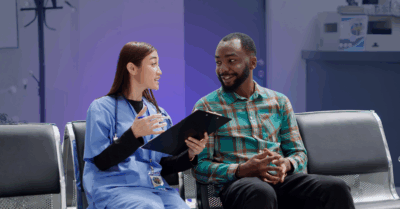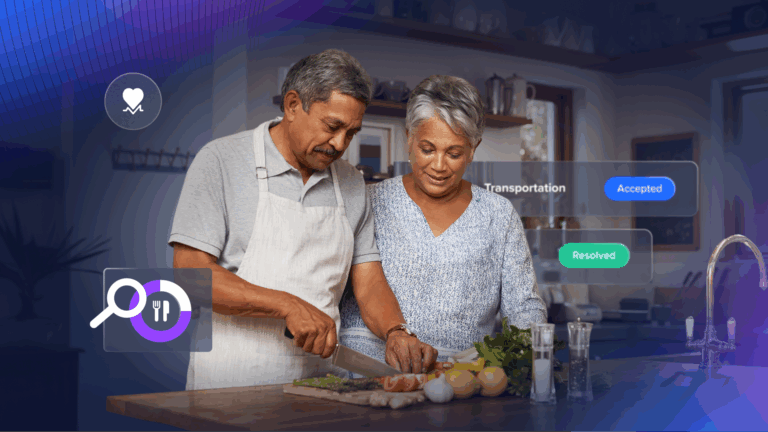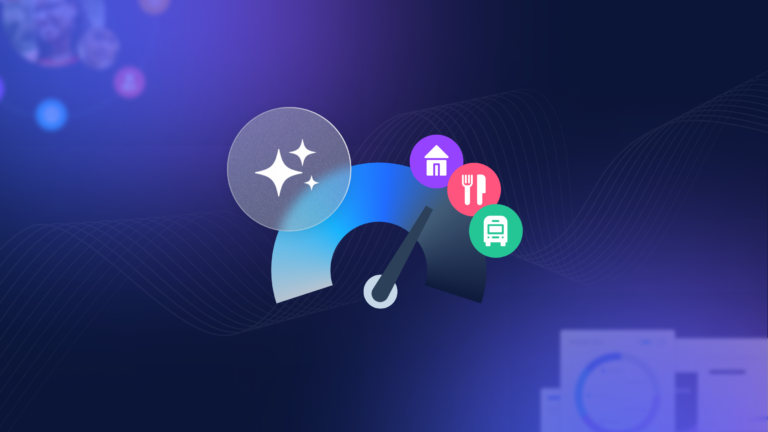
From Data to Dignity: Transforming Medicaid with a Human-Centered Self Sufficiency Model
How Self Sufficiency Scores enhance care coordination, facilitate human-centered Medicaid transformation, and improve constituent journeys to self-sufficiency.
Across the country, states are grappling with the same challenge: billions of dollars are being spent on government healthcare and other safety-net programs, but the return on investment is unclear. Elected officials and members of the public want proof that these dollars are driving better outcomes and putting people on the path to stability.
The biggest challenge is a lack of insight. Without visibility into what works, agencies are left trying to solve complex social challenges with incomplete information. And the people these programs are designed to support often remain stuck—cycling through emergency rooms, struggling to keep housing, or juggling multiple jobs without stability.
It doesn’t have to be this way.
A Human Story Behind the Numbers
Meet Anna. In early 2020, a medical emergency and loss of work caused her food insecurity index to spike, revealing through her Self-Sufficiency Score that she was at rising risk for adverse outcomes.
But by May, Anna secured a job—slightly lowering her risk and beginning to rebuild stability. Then, in July, she was connected to a coordinating service organization through the Unite Us Platform. From there, multiple successful interventions followed: she enrolled in local programs, began receiving nutrition support, and gained access to essential food and household goods.
By the end of the year, Anna’s food insecurity index had dropped 23%. Her Self Sufficiency Score didn’t just enable a short-term fix; it gave caseworkers the insight they needed to connect her to the right supports, ultimately putting her on a path to stability.
¹ “Anna” is a pseudonym used to protect client privacy.
From Data to Dignity: Self Sufficiency Scores
The Self Sufficiency Score isn’t just another metric. It’s a human-centered way to measure and predict risk—taking into account the full picture of someone’s social, economic, and health circumstances, as well as what’s going on in their unique neighborhood and community.
Here’s how it changes the game for Medicaid programs:
- Identify At-Risk Individuals Early
By analyzing factors like food insecurity, housing instability, unemployment, and low health literacy, the score helps states predict which individuals are most likely to face adverse outcomes or those that would benefit from limited and targeted stabilizing interventions—before costly interventions are needed or benefits support reaches a chronic status.
- Coordinate Across Sectors
Instead of siloed responses, state agencies, Medicaid payers, healthcare providers, and community-based organizations can work from the same information, delivering the right service at the right time. - Track Progress Toward Constituent Self Sufficiency
As individuals receive services, their score changes—making it possible to measure the real-world impact of interventions and adjust strategies to improve outcomes. - Demonstrate ROI and Impact
State leaders can track improvements at both the individual and population level, showing reduced dependency on public benefits, better health outcomes, and smarter use of taxpayer dollars.
Why It Matters Now
Economic pressures, workforce shortages, and rising Medicaid costs mean states can’t afford to operate blindly. The demand for outcome-driven, coordinated, and efficient programs has never been greater. By adopting a self-sufficiency model, states can target resources where they’ll make the most difference—helping more people like Anna transition toward long-term stability and reduce the chances they’ll need public assistance down the road.
The Road Ahead: Improving Self Sufficiency to Drive ROI
Dignity comes from more than meeting immediate needs—it’s about giving people the tools, connections, and opportunities to thrive long-term. Data, when used wisely, becomes a powerful enabler of that dignity.
With the Self Sufficiency Score, states have a clear path forward: align programs, predict need, track progress, and most importantly, change lives.
Because behind every data point is a person—and when we see the whole picture, we can finally deliver whole solutions.



